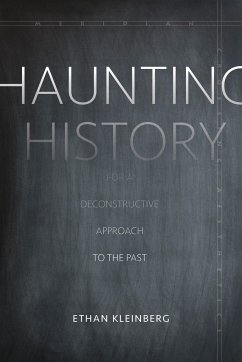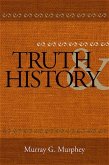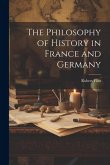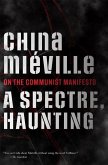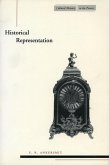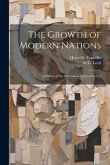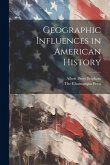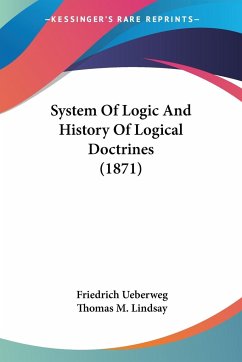- Broschiertes Buch
- Merkliste
- Auf die Merkliste
- Bewerten Bewerten
- Teilen
- Produkt teilen
- Produkterinnerung
- Produkterinnerung
Ethan Kleinberg is Professor of History and Letters at Wesleyan University and the author of Generation Existential: Heidegger's Philosophy in France, 1927¿1961 (2005).
Andere Kunden interessierten sich auch für
![Truth and History Truth and History]() Murray G MurpheyTruth and History41,99 €
Murray G MurpheyTruth and History41,99 €![The Philosophy of History in France and Germany The Philosophy of History in France and Germany]() Flint RobertThe Philosophy of History in France and Germany35,99 €
Flint RobertThe Philosophy of History in France and Germany35,99 €![A Spectre, Haunting A Spectre, Haunting]() China MiévilleA Spectre, Haunting20,99 €
China MiévilleA Spectre, Haunting20,99 €![Historical Representation Historical Representation]() F R AnkersmitHistorical Representation37,99 €
F R AnkersmitHistorical Representation37,99 €![The Growth of Modern Nations: A History of the Particularist Form of Society The Growth of Modern Nations: A History of the Particularist Form of Society]() Henri de TourvilleThe Growth of Modern Nations: A History of the Particularist Form of Society32,99 €
Henri de TourvilleThe Growth of Modern Nations: A History of the Particularist Form of Society32,99 €![Geographic Influences in American History Geographic Influences in American History]() Albert Perry BrighamGeographic Influences in American History26,99 €
Albert Perry BrighamGeographic Influences in American History26,99 €![System Of Logic And History Of Logical Doctrines (1871) System Of Logic And History Of Logical Doctrines (1871)]() Friedrich UeberwegSystem Of Logic And History Of Logical Doctrines (1871)37,99 €
Friedrich UeberwegSystem Of Logic And History Of Logical Doctrines (1871)37,99 €-
-
-
Ethan Kleinberg is Professor of History and Letters at Wesleyan University and the author of Generation Existential: Heidegger's Philosophy in France, 1927¿1961 (2005).
Hinweis: Dieser Artikel kann nur an eine deutsche Lieferadresse ausgeliefert werden.
Hinweis: Dieser Artikel kann nur an eine deutsche Lieferadresse ausgeliefert werden.
Produktdetails
- Produktdetails
- Verlag: Stanford University Press
- Seitenzahl: 208
- Erscheinungstermin: 22. August 2017
- Englisch
- Abmessung: 228mm x 149mm x 17mm
- Gewicht: 321g
- ISBN-13: 9781503603387
- ISBN-10: 1503603385
- Artikelnr.: 47777582
- Herstellerkennzeichnung
- Libri GmbH
- Europaallee 1
- 36244 Bad Hersfeld
- gpsr@libri.de
- Verlag: Stanford University Press
- Seitenzahl: 208
- Erscheinungstermin: 22. August 2017
- Englisch
- Abmessung: 228mm x 149mm x 17mm
- Gewicht: 321g
- ISBN-13: 9781503603387
- ISBN-10: 1503603385
- Artikelnr.: 47777582
- Herstellerkennzeichnung
- Libri GmbH
- Europaallee 1
- 36244 Bad Hersfeld
- gpsr@libri.de
Ethan Kleinberg is Professor of History and Letters at Wesleyan University and the author of Generation Existential: Heidegger's Philosophy in France, 1927-1961 (2005).
Contents and Abstracts
Introduction: Introduction
chapter abstract
The introduction provides an overview of the books general argument by
defining "ontological realism" as the dominant more of conventional
historical practice and then offering a deconstructive approach to the past
as a more productive alternative. For the most part, Derrida's engagement
with the question of "history" did not address the practices of working
historians so Kleinberg looks to the places where this is explicit such as
Derrida's Archive Fever. In so doing he lays out the argument that will
follow in the book and advocates for an unsettling of the orderly
boundaries and lines by which we conventionally think about the relation
between past and present and thus the way we "do" history.
1Haunting History
chapter abstract
Chapter One, "Haunting History," provides an intellectual history of the
reception of deconstruction in the American historical profession by means
of a ghost story. Deconstruction is described as akin to the ghost both
because while it has been repeatedly targeted in attacks against the
dangers of postmodernism, poststructuralism, or the "linguistic turn," very
few historians actively use deconstruction as a historical methodology; in
this regard the target has always been a phantom. But also because of the
ways that deconstruction itself haunts disciplinary history exposing the
axiomatic assumptions of conventional historians and revealing the complex
nature of our relationship with the past.
2Presence in Absentia
chapter abstract
Chapter Two extend the discussion in Chapter One to explore the recent
trend in philosophy of history known as "Presence." Utilizing the ghost of
Christmas present in Charles Dickens' A Christmas Carol, Kleinberg explores
the work of Eelco Runia, Hans-Ulrich Gumbrecht, and Frank Ankersmit to
reveal the limitations of the Presence model and its affinities to
conventional ontological realist history.
3Chladenius, Droysen, Dilthey: Back to Where We've Never Been
chapter abstract
Chapter Three looks to the German historicist tradition and the figures of
Johann Martin Chladenius (1710-1759), Johann Gustav Droysen (1808-1884),
and Wilhelm Dilthey (1833-1911) to determine its relation to "ontological
realism" and to expose the limitations of that model in our current
intellectual milieu. It is argued that a closer look at these three
thinkers sheds light on the utility of a deconstructive, hauntological,
approach to the past that is guided by, though not beholden to, Derrida.
4The Analog Ceiling
chapter abstract
Chapter Four argues that the dominance of ontological realism in the
historical profession is no longer justifiable based on our current
understanding of the past but is nevertheless supported by our current
scholarly publishing practices. What Kleinberg calls the "analog ceiling"
functions because it allows one to argue that even though the past may not
really correlate to the narrative reconstructions of ontological realism,
this form is nevertheless the best analogy to make the past intelligible,
understandable, and comprehensible. To counter this model Kleinberg looks
to current innovations in digital scholarship and the ways that a
deconstructive approach to the past enable us to innovate and reimagine how
history can be done. It argues that academic research and publishing as we
know it are changing in ways that will alter how we think and write about
the past, and as a result the discipline of history.
5Past Possible and Possible Pasts
chapter abstract
The final fifth chapter, concludes by offering a deconstructive approach to
the past as a theory of and methodology for history. Using Washington
Irving's Legend of Sleepy Hollow, Kleinberg explains how a hauntological
approach to history that embraces what he calls the past that is (present
and absent) rather than a fixed and static snapshot of a moment in time is
able to account for the enigma of a past that is both here and gone. The
past, like the ghost, does not properly belong to the present but neither
does it remain entirely in the past, it begins by coming back.
Introduction: Introduction
chapter abstract
The introduction provides an overview of the books general argument by
defining "ontological realism" as the dominant more of conventional
historical practice and then offering a deconstructive approach to the past
as a more productive alternative. For the most part, Derrida's engagement
with the question of "history" did not address the practices of working
historians so Kleinberg looks to the places where this is explicit such as
Derrida's Archive Fever. In so doing he lays out the argument that will
follow in the book and advocates for an unsettling of the orderly
boundaries and lines by which we conventionally think about the relation
between past and present and thus the way we "do" history.
1Haunting History
chapter abstract
Chapter One, "Haunting History," provides an intellectual history of the
reception of deconstruction in the American historical profession by means
of a ghost story. Deconstruction is described as akin to the ghost both
because while it has been repeatedly targeted in attacks against the
dangers of postmodernism, poststructuralism, or the "linguistic turn," very
few historians actively use deconstruction as a historical methodology; in
this regard the target has always been a phantom. But also because of the
ways that deconstruction itself haunts disciplinary history exposing the
axiomatic assumptions of conventional historians and revealing the complex
nature of our relationship with the past.
2Presence in Absentia
chapter abstract
Chapter Two extend the discussion in Chapter One to explore the recent
trend in philosophy of history known as "Presence." Utilizing the ghost of
Christmas present in Charles Dickens' A Christmas Carol, Kleinberg explores
the work of Eelco Runia, Hans-Ulrich Gumbrecht, and Frank Ankersmit to
reveal the limitations of the Presence model and its affinities to
conventional ontological realist history.
3Chladenius, Droysen, Dilthey: Back to Where We've Never Been
chapter abstract
Chapter Three looks to the German historicist tradition and the figures of
Johann Martin Chladenius (1710-1759), Johann Gustav Droysen (1808-1884),
and Wilhelm Dilthey (1833-1911) to determine its relation to "ontological
realism" and to expose the limitations of that model in our current
intellectual milieu. It is argued that a closer look at these three
thinkers sheds light on the utility of a deconstructive, hauntological,
approach to the past that is guided by, though not beholden to, Derrida.
4The Analog Ceiling
chapter abstract
Chapter Four argues that the dominance of ontological realism in the
historical profession is no longer justifiable based on our current
understanding of the past but is nevertheless supported by our current
scholarly publishing practices. What Kleinberg calls the "analog ceiling"
functions because it allows one to argue that even though the past may not
really correlate to the narrative reconstructions of ontological realism,
this form is nevertheless the best analogy to make the past intelligible,
understandable, and comprehensible. To counter this model Kleinberg looks
to current innovations in digital scholarship and the ways that a
deconstructive approach to the past enable us to innovate and reimagine how
history can be done. It argues that academic research and publishing as we
know it are changing in ways that will alter how we think and write about
the past, and as a result the discipline of history.
5Past Possible and Possible Pasts
chapter abstract
The final fifth chapter, concludes by offering a deconstructive approach to
the past as a theory of and methodology for history. Using Washington
Irving's Legend of Sleepy Hollow, Kleinberg explains how a hauntological
approach to history that embraces what he calls the past that is (present
and absent) rather than a fixed and static snapshot of a moment in time is
able to account for the enigma of a past that is both here and gone. The
past, like the ghost, does not properly belong to the present but neither
does it remain entirely in the past, it begins by coming back.
Contents and Abstracts
Introduction: Introduction
chapter abstract
The introduction provides an overview of the books general argument by
defining "ontological realism" as the dominant more of conventional
historical practice and then offering a deconstructive approach to the past
as a more productive alternative. For the most part, Derrida's engagement
with the question of "history" did not address the practices of working
historians so Kleinberg looks to the places where this is explicit such as
Derrida's Archive Fever. In so doing he lays out the argument that will
follow in the book and advocates for an unsettling of the orderly
boundaries and lines by which we conventionally think about the relation
between past and present and thus the way we "do" history.
1Haunting History
chapter abstract
Chapter One, "Haunting History," provides an intellectual history of the
reception of deconstruction in the American historical profession by means
of a ghost story. Deconstruction is described as akin to the ghost both
because while it has been repeatedly targeted in attacks against the
dangers of postmodernism, poststructuralism, or the "linguistic turn," very
few historians actively use deconstruction as a historical methodology; in
this regard the target has always been a phantom. But also because of the
ways that deconstruction itself haunts disciplinary history exposing the
axiomatic assumptions of conventional historians and revealing the complex
nature of our relationship with the past.
2Presence in Absentia
chapter abstract
Chapter Two extend the discussion in Chapter One to explore the recent
trend in philosophy of history known as "Presence." Utilizing the ghost of
Christmas present in Charles Dickens' A Christmas Carol, Kleinberg explores
the work of Eelco Runia, Hans-Ulrich Gumbrecht, and Frank Ankersmit to
reveal the limitations of the Presence model and its affinities to
conventional ontological realist history.
3Chladenius, Droysen, Dilthey: Back to Where We've Never Been
chapter abstract
Chapter Three looks to the German historicist tradition and the figures of
Johann Martin Chladenius (1710-1759), Johann Gustav Droysen (1808-1884),
and Wilhelm Dilthey (1833-1911) to determine its relation to "ontological
realism" and to expose the limitations of that model in our current
intellectual milieu. It is argued that a closer look at these three
thinkers sheds light on the utility of a deconstructive, hauntological,
approach to the past that is guided by, though not beholden to, Derrida.
4The Analog Ceiling
chapter abstract
Chapter Four argues that the dominance of ontological realism in the
historical profession is no longer justifiable based on our current
understanding of the past but is nevertheless supported by our current
scholarly publishing practices. What Kleinberg calls the "analog ceiling"
functions because it allows one to argue that even though the past may not
really correlate to the narrative reconstructions of ontological realism,
this form is nevertheless the best analogy to make the past intelligible,
understandable, and comprehensible. To counter this model Kleinberg looks
to current innovations in digital scholarship and the ways that a
deconstructive approach to the past enable us to innovate and reimagine how
history can be done. It argues that academic research and publishing as we
know it are changing in ways that will alter how we think and write about
the past, and as a result the discipline of history.
5Past Possible and Possible Pasts
chapter abstract
The final fifth chapter, concludes by offering a deconstructive approach to
the past as a theory of and methodology for history. Using Washington
Irving's Legend of Sleepy Hollow, Kleinberg explains how a hauntological
approach to history that embraces what he calls the past that is (present
and absent) rather than a fixed and static snapshot of a moment in time is
able to account for the enigma of a past that is both here and gone. The
past, like the ghost, does not properly belong to the present but neither
does it remain entirely in the past, it begins by coming back.
Introduction: Introduction
chapter abstract
The introduction provides an overview of the books general argument by
defining "ontological realism" as the dominant more of conventional
historical practice and then offering a deconstructive approach to the past
as a more productive alternative. For the most part, Derrida's engagement
with the question of "history" did not address the practices of working
historians so Kleinberg looks to the places where this is explicit such as
Derrida's Archive Fever. In so doing he lays out the argument that will
follow in the book and advocates for an unsettling of the orderly
boundaries and lines by which we conventionally think about the relation
between past and present and thus the way we "do" history.
1Haunting History
chapter abstract
Chapter One, "Haunting History," provides an intellectual history of the
reception of deconstruction in the American historical profession by means
of a ghost story. Deconstruction is described as akin to the ghost both
because while it has been repeatedly targeted in attacks against the
dangers of postmodernism, poststructuralism, or the "linguistic turn," very
few historians actively use deconstruction as a historical methodology; in
this regard the target has always been a phantom. But also because of the
ways that deconstruction itself haunts disciplinary history exposing the
axiomatic assumptions of conventional historians and revealing the complex
nature of our relationship with the past.
2Presence in Absentia
chapter abstract
Chapter Two extend the discussion in Chapter One to explore the recent
trend in philosophy of history known as "Presence." Utilizing the ghost of
Christmas present in Charles Dickens' A Christmas Carol, Kleinberg explores
the work of Eelco Runia, Hans-Ulrich Gumbrecht, and Frank Ankersmit to
reveal the limitations of the Presence model and its affinities to
conventional ontological realist history.
3Chladenius, Droysen, Dilthey: Back to Where We've Never Been
chapter abstract
Chapter Three looks to the German historicist tradition and the figures of
Johann Martin Chladenius (1710-1759), Johann Gustav Droysen (1808-1884),
and Wilhelm Dilthey (1833-1911) to determine its relation to "ontological
realism" and to expose the limitations of that model in our current
intellectual milieu. It is argued that a closer look at these three
thinkers sheds light on the utility of a deconstructive, hauntological,
approach to the past that is guided by, though not beholden to, Derrida.
4The Analog Ceiling
chapter abstract
Chapter Four argues that the dominance of ontological realism in the
historical profession is no longer justifiable based on our current
understanding of the past but is nevertheless supported by our current
scholarly publishing practices. What Kleinberg calls the "analog ceiling"
functions because it allows one to argue that even though the past may not
really correlate to the narrative reconstructions of ontological realism,
this form is nevertheless the best analogy to make the past intelligible,
understandable, and comprehensible. To counter this model Kleinberg looks
to current innovations in digital scholarship and the ways that a
deconstructive approach to the past enable us to innovate and reimagine how
history can be done. It argues that academic research and publishing as we
know it are changing in ways that will alter how we think and write about
the past, and as a result the discipline of history.
5Past Possible and Possible Pasts
chapter abstract
The final fifth chapter, concludes by offering a deconstructive approach to
the past as a theory of and methodology for history. Using Washington
Irving's Legend of Sleepy Hollow, Kleinberg explains how a hauntological
approach to history that embraces what he calls the past that is (present
and absent) rather than a fixed and static snapshot of a moment in time is
able to account for the enigma of a past that is both here and gone. The
past, like the ghost, does not properly belong to the present but neither
does it remain entirely in the past, it begins by coming back.

